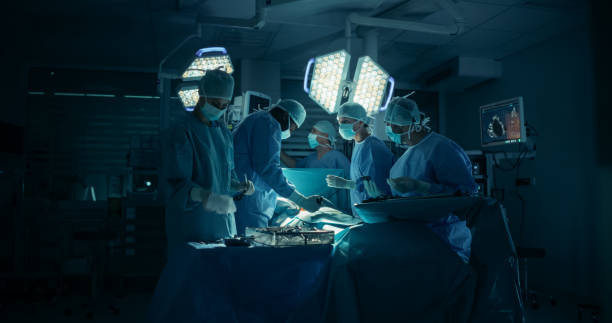Surgery has always stood at the intersection of science, art, and courage. For most of human history, surgery was a desperate act—performed without anesthesia, antiseptics, or even a clear understanding of anatomy. The risks were staggering, and survival was uncertain. But in the last two centuries, medicine has undergone a revolution, and nowhere is this more evident than in the field of surgery.
Modern surgical techniques are not just about saving lives; they are about restoring quality of life, reducing pain, and even enhancing human capabilities. With the help of technology, precision tools, advanced imaging, and new materials, surgeons can now perform operations that were once considered impossible. From repairing a tiny artery in the brain to transplanting entire organs, the boundaries of surgery have expanded beyond imagination.
This article explores fifteen of the greatest advances in modern surgery—achievements that have not only transformed medicine but also reshaped what it means to be human.
1. The Discovery of Anesthesia
Before anesthesia, surgery was a nightmare. Patients were fully awake and had to be physically restrained as surgeons worked quickly to minimize agony. The discovery of anesthesia in the mid-19th century completely changed surgery.
Ether, chloroform, and eventually safer drugs like nitrous oxide and modern inhalation agents allowed patients to be unconscious and pain-free during procedures. This breakthrough made longer, more complex surgeries possible. Today, anesthesiology is a specialized field that ensures patient safety, comfort, and rapid recovery, using tailored combinations of medications. Without anesthesia, modern surgery would not exist.
2. Antiseptic and Sterile Techniques
Another turning point came with Joseph Lister’s introduction of antiseptic techniques in the late 19th century. Before this, infections after surgery were common and often fatal. By using carbolic acid to sterilize instruments and clean wounds, Lister drastically reduced postoperative infections.
This evolved into the practice of sterile surgery—gloves, gowns, masks, disinfected instruments, and sterile operating rooms. Today, strict infection-control protocols, combined with antibiotics, make surgeries far safer than ever before. The introduction of sterility did not just advance surgery—it saved countless lives.
3. Blood Transfusions and Blood Banking
Until the early 20th century, blood loss during surgery was often fatal. The discovery of blood groups by Karl Landsteiner in 1901 made transfusions possible and safe. The development of blood storage and blood banks during World War I allowed surgeons to perform complex procedures without the fear of patients bleeding to death.
Modern blood banking ensures that hospitals can always access safe, screened blood. This advance underpins nearly every type of major surgery, from heart operations to organ transplants, making it one of the most important milestones in surgical history.
4. Organ Transplantation
Perhaps one of the most miraculous advances in modern surgery is organ transplantation. In 1954, Dr. Joseph Murray performed the first successful kidney transplant between identical twins. Since then, liver, heart, lung, pancreas, and even face transplants have become possible.
The biggest breakthrough came with the development of immunosuppressive drugs like cyclosporine in the 1980s, which prevent the body from rejecting transplanted organs. Today, thousands of lives are saved every year thanks to organ donation and transplantation. Though challenges remain—such as organ shortages and rejection—this achievement represents humanity’s ability to extend life in extraordinary ways.
5. Minimally Invasive Surgery (Keyhole Surgery)
Traditional open surgery often required large incisions, which meant more pain, higher infection risk, and longer recovery. The rise of laparoscopic (keyhole) surgery in the 1980s revolutionized surgical practice.
By using small incisions, a camera, and specialized instruments, surgeons can now operate with remarkable precision. This technique reduces scarring, speeds up recovery, and lowers the risk of complications. Today, laparoscopic surgery is used for gallbladder removal, appendectomies, hernia repair, gynecological procedures, and even complex operations like colorectal cancer resections.
6. Robotic Surgery
If laparoscopy was the first step toward precision, robotic surgery has taken it even further. The da Vinci Surgical System, introduced in the early 2000s, allows surgeons to control robotic arms that provide enhanced dexterity, tremor-free precision, and 3D visualization.
Robotic surgery is especially valuable in delicate procedures, such as prostate surgery, cardiac valve repair, and gynecological operations. Patients benefit from smaller incisions, less pain, and faster recovery, while surgeons gain a level of precision previously unimaginable. As technology improves, robotic systems are becoming even more advanced and widespread.
7. Microsurgery
Microsurgery involves using a high-powered microscope and ultra-fine instruments to perform intricate procedures on tiny structures like blood vessels, nerves, and lymphatic channels.
This breakthrough has made possible limb reattachments, complex reconstructive surgeries, and nerve repairs. Surgeons can now reconnect vessels less than a millimeter wide, restoring blood flow and saving tissue that would otherwise be lost. Microsurgery is also essential in plastic surgery, cancer reconstruction, and even fertility treatments.
8. Heart Surgery and Bypass Techniques
Heart surgery has saved millions of lives worldwide. The development of the heart-lung machine in the 1950s allowed surgeons to stop the heart temporarily while maintaining blood circulation, opening the door to complex cardiac procedures.
Coronary artery bypass grafting (CABG), developed in the 1960s, became one of the most common and life-saving surgeries for people with blocked arteries. Valve replacements, congenital defect repairs, and heart transplants have also become routine. The refinement of minimally invasive heart surgery and catheter-based techniques continues to transform cardiology and surgery alike.
9. Joint Replacement Surgery
For patients suffering from arthritis or severe joint damage, joint replacement surgery has been life-changing. The first modern hip replacement was performed in the 1960s, and since then, both hip and knee replacements have become common procedures.
Artificial joints, made from durable metals, ceramics, and polymers, restore mobility and relieve pain. Modern prosthetics are designed to last decades, and new techniques such as robotic-assisted joint replacement make the surgery even more precise. This advance has given millions of people a new lease on life.
10. Laser Surgery
The introduction of lasers into surgery has opened up new possibilities across multiple specialties. Lasers allow for highly precise cutting and cauterization, minimizing blood loss and tissue damage.
Laser surgery is used in eye procedures like LASIK to correct vision, in dermatology for removing scars and tumors, in urology for treating kidney stones, and even in delicate brain and spinal surgeries. The ability to target tissue with pinpoint accuracy has made lasers an indispensable tool in modern operating rooms.
11. Imaging-Guided Surgery
Modern surgery is guided not just by a surgeon’s hands but by advanced imaging technologies. CT scans, MRI, and intraoperative ultrasound allow surgeons to see inside the body in real time, guiding them with extraordinary accuracy.
One of the most advanced techniques is image-guided neurosurgery, where surgeons use real-time 3D maps of the brain to remove tumors while preserving critical functions. Similarly, interventional radiology allows surgeons to perform procedures using imaging guidance with minimal invasiveness. This combination of imaging and surgery represents a perfect union of technology and medicine.
12. Endovascular and Interventional Surgery
Blood vessel-related conditions such as aneurysms or blockages once required major open surgery. Today, endovascular surgery allows doctors to treat these problems from within the vessels themselves.
By inserting catheters through small punctures, surgeons can place stents, repair aneurysms, or restore blood flow without large incisions. This approach dramatically reduces recovery times and complications. Interventional cardiology and vascular surgery have been transformed by these techniques, saving lives in emergencies such as heart attacks and strokes.
13. Face and Hand Transplants
Beyond organ transplantation, modern surgery has made possible the replacement of entire faces and hands. The first successful face transplant occurred in 2005, and since then, several patients worldwide have received partial or full facial transplants.
These procedures are incredibly complex, involving microsurgery, immunology, and reconstruction. They not only restore physical function—such as chewing or grasping—but also give patients a renewed sense of identity and dignity. Though rare, these surgeries represent the pinnacle of modern reconstructive techniques.
14. 3D Printing and Bioprinting in Surgery
One of the most exciting new frontiers is the use of 3D printing in surgery. Surgeons can now create patient-specific models of organs, bones, or tumors to plan procedures with unmatched precision.
Custom implants, prosthetics, and even bone grafts can be manufactured using 3D printing. Beyond that, scientists are working on bioprinting, where living cells are used to print tissues and potentially entire organs. While still in early stages, bioprinting holds the promise of solving the global shortage of donor organs.
15. Artificial Intelligence and Augmented Reality in Surgery
The latest advance in modern surgery is the integration of artificial intelligence (AI) and augmented reality (AR). AI algorithms can analyze medical images, assist in diagnosis, and even predict surgical outcomes. AR systems allow surgeons to overlay 3D visualizations onto the patient during surgery, enhancing precision.
For example, AR-guided spine surgery helps surgeons navigate complex anatomy with greater accuracy. Combined with robotics, these technologies point toward a future where surgery is safer, faster, and even more personalized.
Conclusion
The story of modern surgery is one of triumph over pain, infection, and uncertainty. From anesthesia and antisepsis to robotics and AI, each advance has transformed what surgeons can achieve and how patients recover. Surgery today is not just about survival—it is about restoring quality of life, mobility, dignity, and hope.
These fifteen advances represent milestones in human ingenuity, but the journey is far from over. As new technologies like nanomedicine, regenerative medicine, and bioprinting evolve, the future of surgery promises to be even more extraordinary. The operating room of tomorrow will continue to push boundaries, guided by one timeless mission: to heal, to save, and to give life back to those who need it most.






